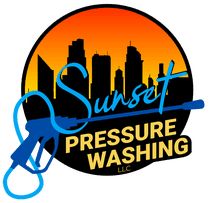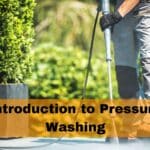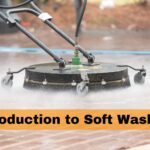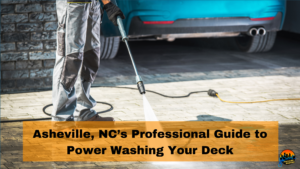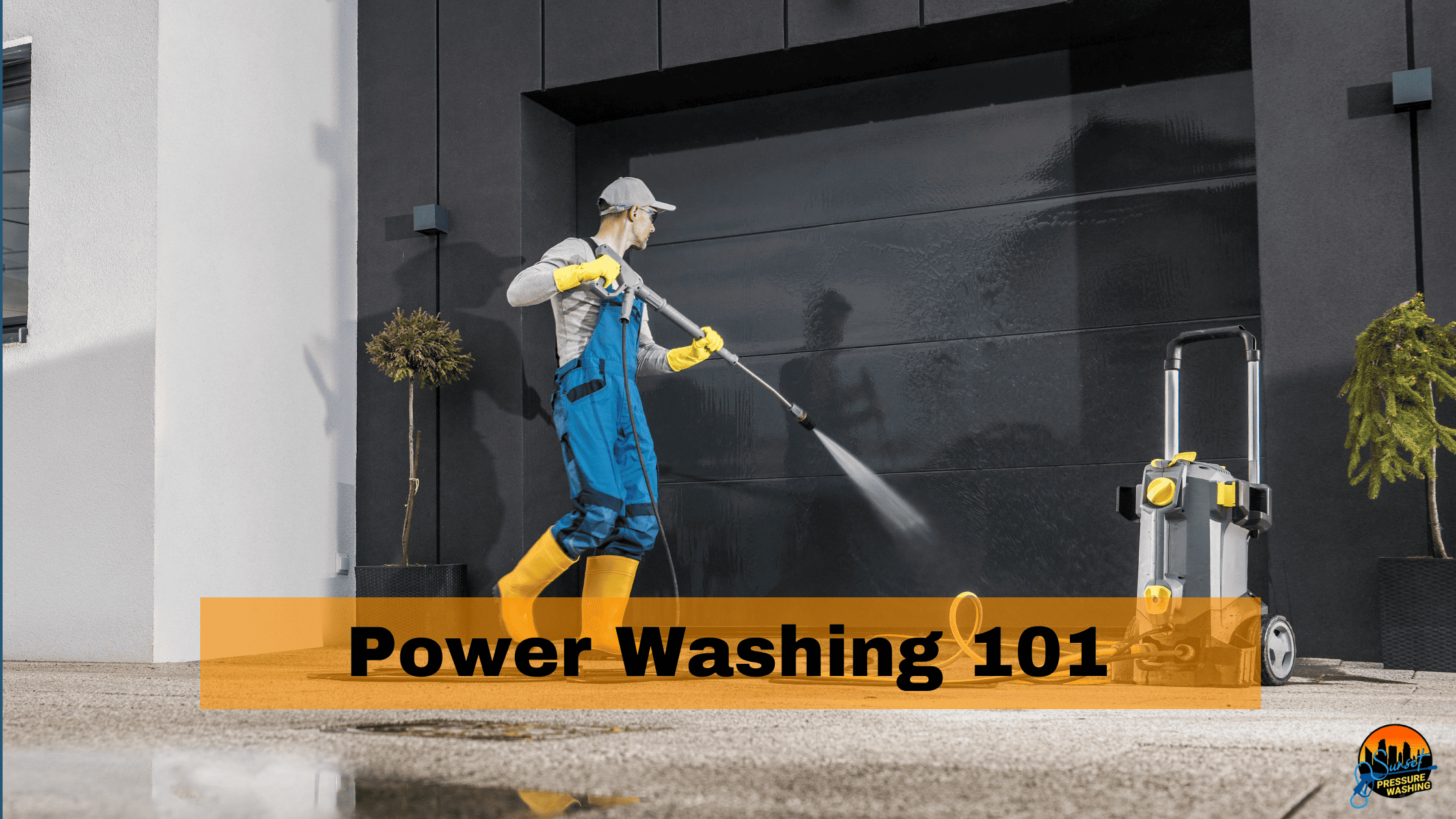
Power Washing 101
Your home or business is more than just a place; it’s a reflection of your pride, your care, and your commitment to maintaining a welcoming environment. However, over time, the natural elements, dirt, grime, and even mold and mildew can take a toll on the appearance and integrity of your property. That’s where the magic of power washing comes into play.
Power washing, a versatile and effective method of cleaning, has the power to breathe new life into your outdoor spaces, making them look as good as new. In this comprehensive guide, we will delve into the world of power washing, exploring everything from its basic principles to the intricacies of its application. Whether you’re a homeowner looking to spruce up your home’s curb appeal, a business owner aiming to maintain a professional appearance, or simply someone who values a clean and welcoming space, this guide is your roadmap to understanding the art and science of power washing.
Power Washing in a Nutshell
Power washing is a cleaning technique that has become increasingly popular due to its remarkable ability to remove dirt, grime, mold, mildew, and other contaminants from various surfaces. Before we delve into the details of how to power wash effectively, it’s essential to have a clear understanding of what power washing entails.
What is Power Washing?
Power washing, often referred to as pressure washing, is a method of cleaning that involves using a high-pressure stream of water to remove dirt, stains, and contaminants from surfaces such as buildings, driveways, decks, and more. This pressurized water, typically delivered through a specialized machine, is highly effective at blasting away accumulated grime, restoring surfaces to their original appearance.
Power washing is an excellent choice for a wide range of cleaning tasks, from revitalizing the exterior of your home to maintaining the cleanliness of commercial spaces. It is renowned for its ability to tackle tough cleaning jobs with relative ease, making it a go-to solution for homeowners and businesses alike.
Difference between Power Washing and Pressure Washing
While the terms “power washing” and “pressure washing” are often used interchangeably, there is a subtle difference between the two methods:
- Power Washing: Power washing uses hot water in addition to high pressure to clean surfaces. The heated water is particularly effective in breaking down and removing grease, oil, and stubborn stains. This method is excellent for tasks that require a bit of extra heat and is often preferred for heavy-duty cleaning.
- Pressure Washing: Pressure washing, on the other hand, relies solely on high-pressure water to clean surfaces. It is suitable for a wide range of cleaning tasks, including removing dirt, dust, mildew, and loose paint. Pressure washing is generally considered more versatile because it can be used on a broader array of surfaces without the risk of damage from heat.
Depending on your specific cleaning needs, you can choose between power washing and pressure washing to achieve optimal results.
Equipment and Tools Used for Power Washing
To perform power washing effectively, you’ll need the right equipment and tools. Here are the key components:
- Pressure Washer: The heart of the power washing process is the pressure washer. These machines come in various sizes and power levels, ranging from smaller electric models for residential use to larger gas-powered units for commercial applications. They have a pump that pressurizes the water and a nozzle that sprays it onto the surface at high velocity.
- Nozzles: Pressure washers typically come with interchangeable nozzles that allow you to adjust the spray pattern and pressure. Nozzles are color-coded for easy identification, with each color representing a different degree of spray angle, from a narrow, high-pressure stream to a wider, lower-pressure fan pattern.
- Hoses: High-pressure hoses connect the pressure washer to a water source and transport pressurized water to the nozzle. It’s crucial to use the right hose size and length to ensure efficient cleaning.
- Detergents: Some power washing jobs may require the use of specialized detergents or cleaning solutions. These detergents are designed to help break down stubborn stains and contaminants.
- Safety Gear: Safety should always be a priority when power washing. Protective gear like safety goggles, gloves, and appropriate clothing should be worn to safeguard against potential splashes and debris.
Benefits of Power Washing
Power washing isn’t just a chore; it’s a transformative process that can bring a range of benefits to both residential and commercial property owners. Understanding these advantages can help you appreciate the value of power washing and why it should be a part of your regular maintenance routine.
Enhancing Curb Appeal
- Reviving Appearance: Over time, the exterior surfaces of your home or business can accumulate dirt, grime, algae, and other unsightly substances. Power washing can make a remarkable difference by restoring these surfaces to their original beauty, instantly enhancing your property’s curb appeal.
- Increasing Property Value: A clean and well-maintained property is more appealing to potential buyers or renters. Power washing can boost your property’s market value and help you make a positive first impression.
- Preventing Premature Aging: Regular power washing can extend the lifespan of your property’s exterior materials. By removing contaminants that contribute to deterioration, you can delay the need for costly repairs and replacements.
Preventing Damage and Deterioration
- Mold and Mildew Removal: Mold and mildew not only detract from your property’s appearance but can also cause structural damage over time. Power washing eliminates these harmful growths, preventing further deterioration.
- Protecting Paint and Coatings: Power washing is an excellent way to prepare surfaces for repainting or resealing. It removes loose paint, allowing for better adhesion of new coatings and helping to prevent premature peeling or flaking.
- Preserving Wood Surfaces: Wooden decks, fences, and siding can be susceptible to rot and decay if not properly maintained. Power washing removes dirt, mildew, and surface contaminants, prolonging the life of your wooden structures.
Health and Environmental Benefits
- Allergen Removal: Power washing can remove allergens like pollen, dust, and mildew, creating a healthier living or working environment for you and your family or employees.
- Mold Prevention: Eliminating mold and mildew not only protects your property but also reduces the risk of respiratory issues and allergies associated with exposure to these fungi.
- Environmentally Friendly: Power washing is an eco-friendly cleaning method when performed responsibly. It reduces the need for harsh chemicals and conserves water compared to traditional cleaning methods.
Cost Savings in the Long Run
- Preventing Costly Repairs: Regular power washing helps identify and address issues early, preventing minor problems from escalating into expensive repairs.
- Longer Lifespan: By maintaining your property’s surfaces, you can extend their lifespan, reducing the frequency of costly replacements.
- Energy Efficiency: Clean surfaces can reflect more sunlight, reducing heat absorption and potentially lowering cooling costs during hot seasons.
As you can see, the benefits of power washing extend far beyond mere aesthetics. It’s a practical investment in the longevity, value, and overall well-being of your property. Whether you’re a homeowner or a business owner, incorporating power washing into your maintenance routine can yield substantial returns.
Choosing the Right Time and Place
Power washing is a versatile cleaning method, but it’s crucial to select the appropriate time and location for your cleaning projects. The effectiveness of power washing can vary depending on various factors, including weather conditions and the type of surface you plan to clean. Here’s how to choose the right time and place for your power washing endeavors:
Ideal Seasons for Power Washing
- Spring: Spring is an excellent time for power washing as it follows the harsh winter months and prepares your property for the warmer seasons. You can remove built-up winter grime and prepare outdoor spaces for use.
- Early Summer: Early summer is ideal for power washing, especially before hosting outdoor gatherings or events. It can help you refresh your property’s appearance and ensure it looks its best for the season.
- Fall: Fall power washing is beneficial for removing fallen leaves, dirt, and other debris that can accumulate during the season. It also helps prepare your property for winter, preventing potential damage from snow and ice.
Suitable Surfaces and Areas
- Exterior Walls: Power washing is perfect for cleaning exterior walls made of various materials, including siding, stucco, brick, and concrete. It can remove dirt, mildew, and stains, restoring the visual appeal of your property.
- Driveways and Walkways: Concrete driveways and walkways often accumulate oil stains, tire marks, and algae growth. Power washing can effectively remove these blemishes, enhancing safety and aesthetics.
- Decks and Patios: Wooden decks and patios are susceptible to dirt, mildew, and discoloration. Power washing can rejuvenate these outdoor spaces, making them inviting and comfortable.
- Fences: Whether it’s a wooden or vinyl fence, power washing can remove dirt, mildew, and grime, preserving the fence’s appearance and longevity.
- Roofs: Certain types of roofs, such as asphalt shingles, can benefit from gentle power washing to remove moss, algae, and debris. However, roof power washing should be done with caution to avoid damaging the roofing material.
Identifying When Your Space Needs Power Washing
- Visible Stains and Discoloration: If you notice visible stains, discoloration, or a dull appearance on surfaces like walls, driveways, or decks, it’s a sign that power washing may be needed.
- Mildew and Mold Growth: The presence of mold and mildew can not only affect the aesthetics but also the health of your space. If you see these growths on your property, it’s time for a power wash.
- Preventative Maintenance: Regularly scheduling power washing as part of your maintenance routine can prevent the buildup of dirt and contaminants, preserving the appearance and structural integrity of your property.
- Special Events: If you’re planning a special event or occasion at your property, consider power washing beforehand to ensure a clean and inviting atmosphere for your guests.
DIY vs. Professional Power Washing
Once you’ve decided that power washing is the solution to spruce up your property, the next decision you’ll need to make is whether to take the DIY route or enlist the services of professional power washers. Each approach has its own set of advantages and considerations. Here’s a breakdown to help you make an informed choice:
Pros and Cons of DIY Power Washing
Pros:
- Cost Savings: DIY power washing can save you money since you won’t have to hire professionals. You’ll only need to invest in a power washer and cleaning supplies.
- Convenience: You have control over your schedule, and you can tackle smaller projects on your own time without waiting for an appointment.
- Familiarity with Your Property: As a homeowner or business owner, you may have a better understanding of the specific needs and areas that require cleaning.
Cons:
- Learning Curve: Power washing requires skill and knowledge to avoid damaging surfaces or injuring yourself. There is a learning curve involved, which can lead to mistakes, especially for beginners.
- Equipment Costs: While buying or renting a power washer might seem cost-effective, the initial investment can be relatively high, and cheaper models may not deliver the best results.
- Risk of Damage: Incorrect pressure settings or improper technique can cause damage to surfaces, leading to costly repairs or replacements.
- Time-Consuming: DIY power washing can be time-consuming, especially for larger properties or extensive cleaning projects.
Benefits of Hiring a Professional Power Washing Service
Pros:
- Expertise and Experience: Professional power washers have the training and experience to handle various surfaces and cleaning challenges effectively.
- Specialized Equipment: Professionals have access to commercial-grade equipment, ensuring better results compared to consumer-grade power washers.
- Time Efficiency: Professional teams can complete projects quickly and efficiently, freeing up your time for other priorities.
- Reduced Risk: Trained professionals are less likely to damage your property, ensuring a safe and effective cleaning process.
- Customized Solutions: Professionals can assess your property’s specific needs and tailor their approach to achieve optimal results.
Cons:
- Cost: Hiring professionals comes with a cost, which may be higher than purchasing or renting a power washer yourself.
- Scheduling: You’ll need to coordinate with the service provider and potentially work around their availability.
Tips for Hiring the Right Power Washing Company
If you decide that hiring professionals is the best choice for your power washing needs, follow these tips to select the right service provider:
- Research and Compare: Research local power washing companies, read reviews, and request quotes from multiple providers to compare prices and services.
- Check Credentials: Ensure the company is licensed, insured, and bonded. Ask for references and examples of their previous work.
- Ask About Techniques: Inquire about the methods and equipment they use, as well as their approach to safety and environmental concerns.
- Get a Written Estimate: Obtain a detailed written estimate that includes the scope of work, pricing, and any additional charges.
- Communication: Choose a company that is responsive and communicates clearly about the process, expectations, and any potential issues.
Ultimately, the decision between DIY and professional power washing depends on your specific circumstances, budget, and comfort level with handling the equipment and tasks involved. Regardless of your choice, power washing can breathe new life into your property, enhancing its appearance and value
Preparing for Power Washing
Clearing the Area
- Remove Debris: Before beginning the power washing process, clear the area of loose debris, such as leaves, branches, and loose dirt. This prevents debris from clogging the nozzle or causing damage to surfaces.
- Secure Loose Objects: Secure or remove any loose objects, such as outdoor furniture, decor, and plants, to prevent them from being damaged or blown away by the high-pressure water.
Protecting Plants and Objects
- Wet Surrounding Plants: Before you start power washing, thoroughly wet nearby plants, shrubs, and grass with a hose. This helps to protect them from any detergent or chemicals used in the cleaning process.
- Cover Delicate Plants: For especially delicate plants, consider covering them with plastic tarps or drop cloths to shield them from overspray and detergents.
- Remove or Cover Objects: Remove objects like outdoor cushions, pots, and decorative items from the cleaning area. If removal is not possible, cover them with plastic sheeting or tarps to protect them from water and detergents.
Inspecting the Surface
- Check for Damage: Inspect the surface you plan to power wash for any pre-existing damage, loose paint, or structural issues. Power washing can exacerbate existing problems, so it’s important to address them before starting.
- Repair Any Damage: If you find cracks, loose siding, or damaged areas, make the necessary repairs before power washing. This ensures that water doesn’t penetrate these vulnerable areas during cleaning.
Gathering Necessary Supplies
- Power Washer: Ensure your power washer is in good working condition, with all components and hoses properly connected and functioning.
- Nozzles: Select the appropriate nozzle for the task, considering the surface and the degree of cleaning required.
- Detergents or Cleaning Solutions: If your cleaning project requires detergents or cleaning solutions, have them ready. Ensure they are compatible with your power washer and follow manufacturer recommendations.
- Safety Gear: Wear safety gear, including safety goggles, gloves, and appropriate clothing, to protect yourself from potential splashes and debris.
- Extension Cords and Power Source: If you’re using an electric power washer, make sure you have the necessary extension cords and access to a suitable power source.
- Water Supply: Ensure a steady water supply with a garden hose long enough to reach the cleaning area.
Step-by-Step Guide to Power Washing
Preparing the Power Washer
- Read the Manual: Familiarize yourself with the manufacturer’s instructions and safety guidelines outlined in the power washer’s manual. This will help you operate the equipment safely and efficiently.
- Connect the Hose: Attach the garden hose to the power washer’s water inlet. Ensure the hose is securely fastened to prevent leaks.
- Connect the Nozzle: Choose the appropriate nozzle for the task, considering the surface and the degree of cleaning needed. Attach it securely to the spray wand.
- Check Fuel and Oil (Gas-Powered Models): If you’re using a gas-powered power washer, ensure it has sufficient fuel and oil according to the manufacturer’s recommendations.
- Inspect Hoses and Connections: Examine all hoses and connections for any signs of damage, leaks, or wear. Replace or repair any faulty components.
Applying Detergent (If Needed)
- Select the Right Detergent: If your cleaning project requires a detergent or cleaning solution, choose one that is suitable for your power washer and the surface you’re cleaning. Follow the manufacturer’s recommendations for dilution.
- Fill the Detergent Tank or Siphon Hose: Some power washers have a detergent tank, while others use a siphon hose to draw detergent from a separate container. Follow your power washer’s specific instructions for adding detergent.
Setting the Pressure and Nozzle
- Adjust Pressure: Set the pressure level on your power washer according to the surface you’re cleaning. Lower pressure is suitable for delicate surfaces, while higher pressure is needed for tough stains and heavy grime. Start with lower pressure and increase as needed to avoid damaging surfaces.
- Select the Nozzle Angle: Choose the appropriate nozzle angle for the task:
- 0-degree nozzle for high-pressure pinpoint cleaning (use with caution to avoid damage).
- 15-degree nozzle for intense cleaning and removing stains.
- 25-degree nozzle for general cleaning and rinsing.
- 40-degree nozzle for light cleaning and wide coverage.
- Soap nozzle for applying detergent (if available).
Starting the Power Washer
- Safety Precautions: Put on safety goggles, gloves, and appropriate clothing to protect yourself from splashes and debris.
- Start the Engine (Gas-Powered Models): If using a gas-powered unit, follow the manufacturer’s instructions to start the engine. Allow it to warm up before use.
- Turn On the Water Supply: Ensure a continuous water supply to the power washer. Squeeze the trigger on the spray wand to purge air from the system before starting.
Cleaning in Sections
- Maintain a Safe Distance: Stand a safe distance away from the surface you’re cleaning, typically 1 to 2 feet, and maintain a consistent angle of 45 degrees for most effective cleaning.
- Begin Cleaning: Start at the top of the surface and work your way down. Use sweeping motions, moving the spray wand side to side or up and down, depending on the surface’s orientation.
- Overlap Strokes: Overlap each pass by 50% to ensure even cleaning and avoid streaks.
- Keep the Nozzle Moving: Avoid holding the nozzle in one spot for too long, as it can damage the surface. Continuous motion is key.
- Watch for Uniform Cleanliness: Keep an eye on the surface as you work to ensure you’re achieving uniform cleanliness. Adjust the pressure or nozzle angle as needed.
Rinsing the Surface
- Switch to a Rinsing Nozzle: If you used a detergent, switch to a rinsing nozzle after applying it. Rinse the surface thoroughly to remove all detergent residue.
- Rinse from Top to Bottom: Just like during the cleaning phase, start at the top and work your way down, ensuring all detergent and dirt are washed away.
Post-Cleaning Maintenance
- Turn Off the Power Washer: Release the trigger on the spray wand, turn off the power washer, and disconnect the water supply.
- Clean the Power Washer: Properly clean and store the power washer according to the manufacturer’s instructions. Rinse the hoses and nozzle thoroughly.
- Dispose of Detergent Properly: If you used detergent, dispose of any leftover detergent or cleaning solution according to local regulations.
Get Started on Your Journey to a Pristine Property
In the world of home and property maintenance, power washing stands as a transformative tool, breathing new life into surfaces marred by time, weather, and neglect. As we conclude this comprehensive guide, remember that power washing is not just about cleanliness; it’s about enhancing curb appeal, preserving your property’s value, and ensuring the longevity of your investments. Whether you choose the DIY approach or enlist the help of professionals, the benefits are undeniable. With the right knowledge, equipment, and preparation, you can rejuvenate your outdoor spaces and protect them for years to come. And if you’re looking for a trusted partner to take care of your power washing needs, consider Sunset Pressure Washing—a team of experts ready to bring their expertise and commitment to excellence to your doorstep. Say goodbye to dirt, grime, and stains, and welcome a refreshed, vibrant space that reflects your pride and care.
Experience the Difference – Choose Sunset Pressure Washing!
When it comes to entrusting your power washing needs to a professional team, look no further than Sunset Pressure Washing, serving the vibrant communities of North and South Carolina. With years of experience under our belt, Sunset Pressure Washing boasts a team of highly skilled technicians who are well-versed in the art of power washing, dedicated to providing top-tier services in the Carolinas. Here’s why you should choose Sunset Pressure Washing for your power washing needs.
With our extensive experience and local expertise, Sunset Pressure Washing understands the unique needs of properties in North and South Carolina. Our team of highly skilled technicians is well-versed in the art of power washing, ensuring that the Carolinas shine their brightest. We invest in cutting-edge, commercial-grade equipment to ensure the most efficient and effective cleaning possible, tailored to the specific challenges posed by the Carolina climate. Our advanced tools enable us to tackle tough stains, mold, mildew, and grime that are common in these regions, leaving your property looking pristine.
